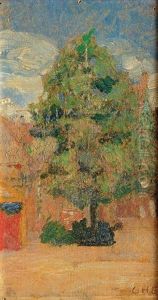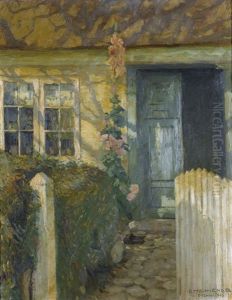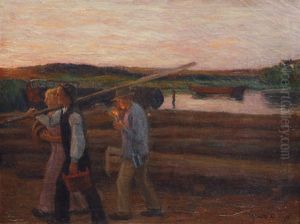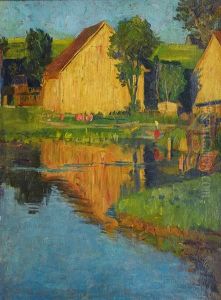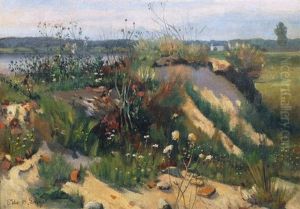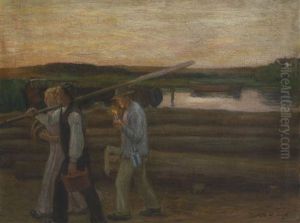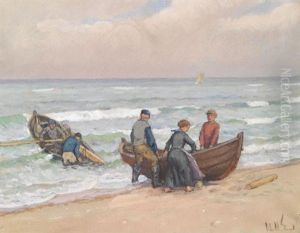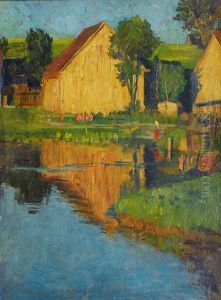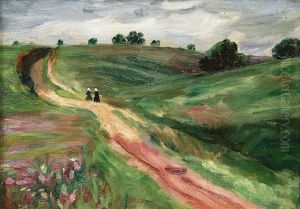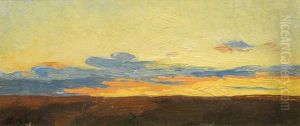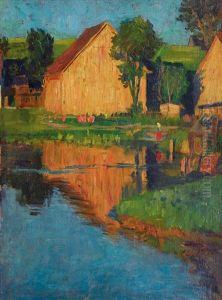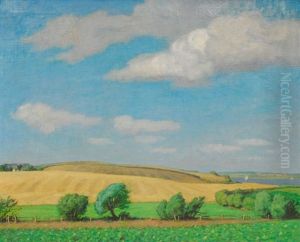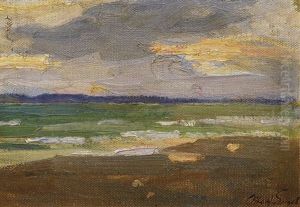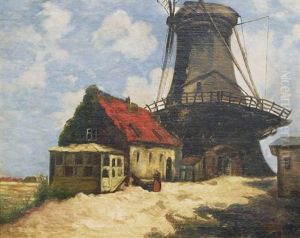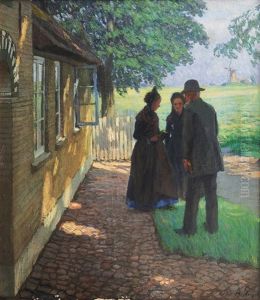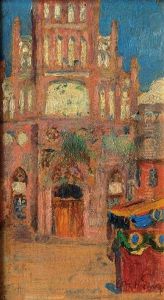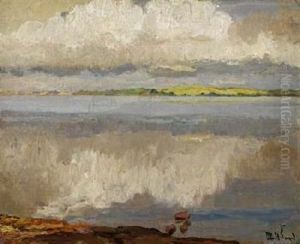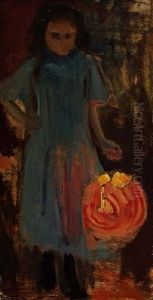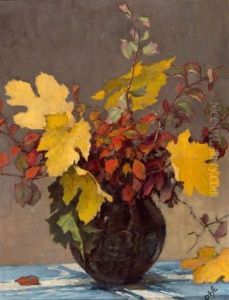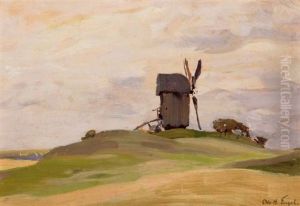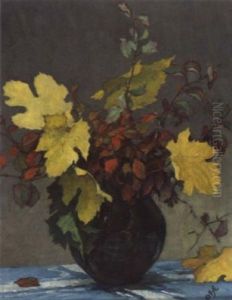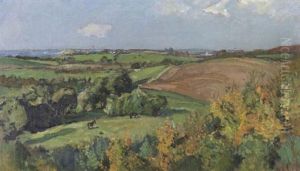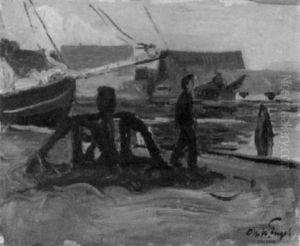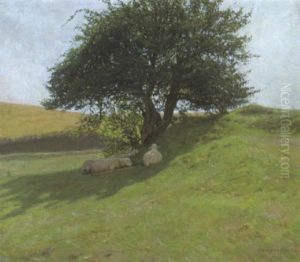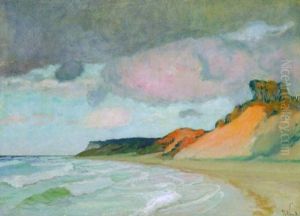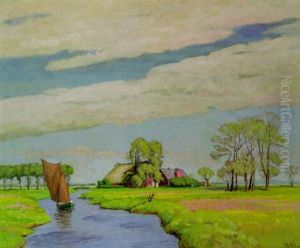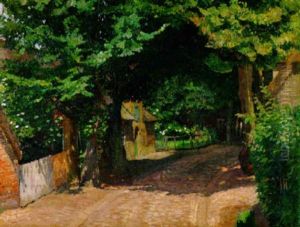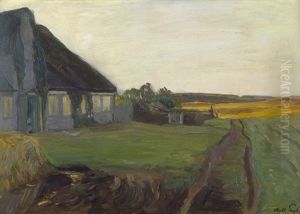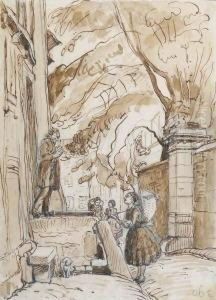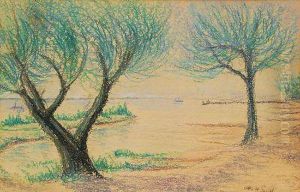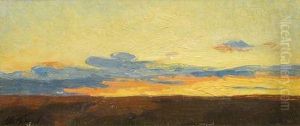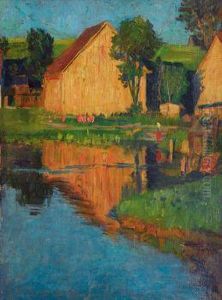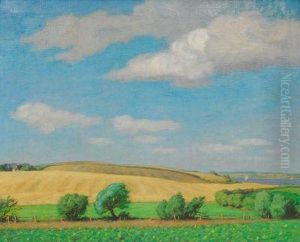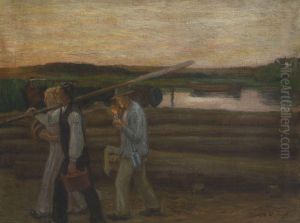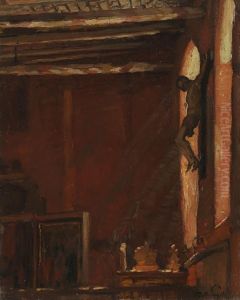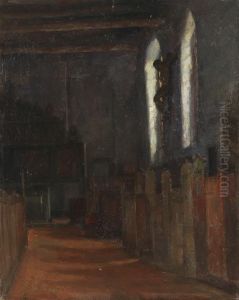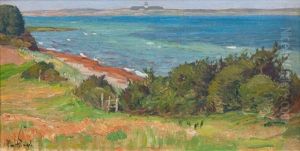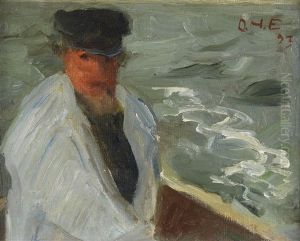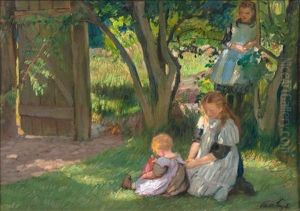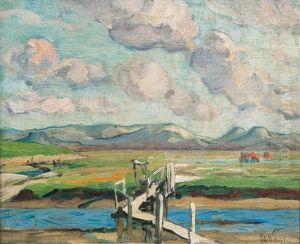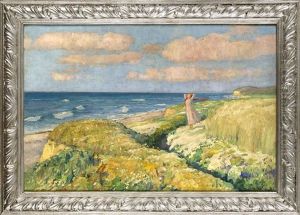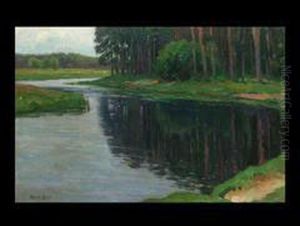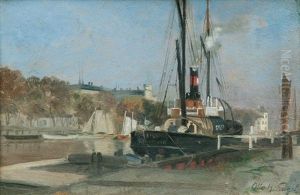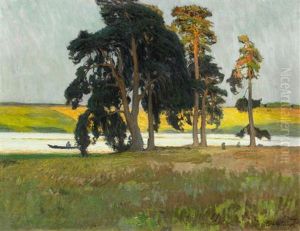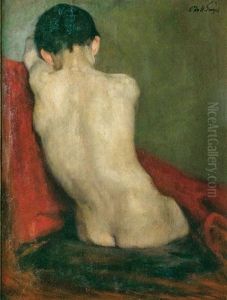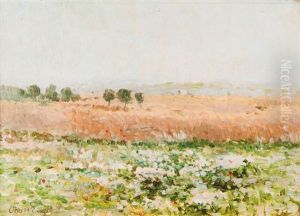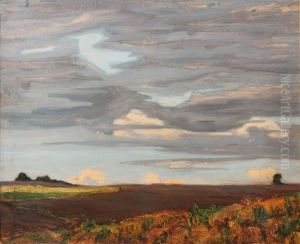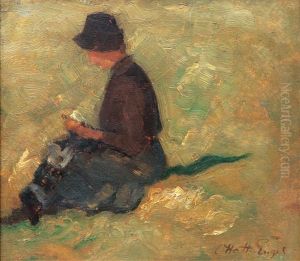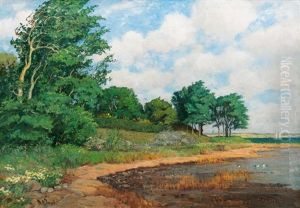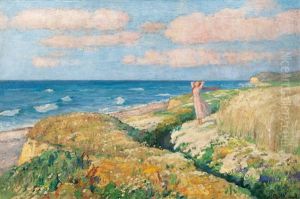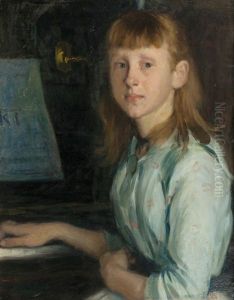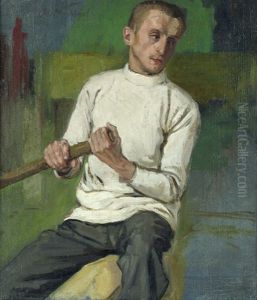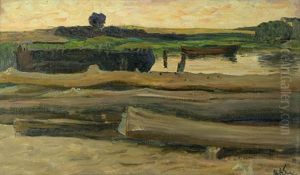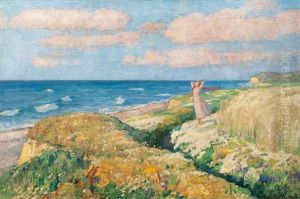Otto Heinrich Engel Paintings
Otto Heinrich Engel was a German painter and illustrator known for his contributions to genres such as landscape, still life, and portrait painting. Born on September 27, 1866, in Leipzig, Germany, Engel developed an early interest in art and pursued his passion through formal education.
Engel's artistic journey began at the Leipzig Academy of Visual Arts, where he honed his skills and developed a foundation in traditional painting techniques. His style was initially influenced by the academic art traditions of the late 19th century, but as he matured as an artist, he began to incorporate elements of Impressionism into his work, which was gaining prominence during that period.
Throughout his career, Engel traveled extensively, drawing inspiration from the various landscapes and cultures he encountered. These experiences enriched his palette and broadened his thematic range. He was particularly known for his ability to capture the interplay of light and shadow, a hallmark of Impressionist painting, which he adeptly applied to both urban scenes and rural landscapes.
Engel's work received recognition during his lifetime, and he participated in numerous exhibitions, both solo and group shows, across Germany. His art was appreciated for its vividness and the emotional resonance of the scenes he depicted. Despite the changing tides of artistic trends, Engel remained committed to his own style, blending realism with the loose brushwork and lighter colors typical of the Impressionists.
Engel lived through two World Wars, periods that were turbulent for artists in Germany. The rise of the Nazi regime and its stance on art, which denounced modernist movements and favored a more classical and nationalistic approach, created a challenging environment for many contemporary artists. However, Engel managed to continue his work, although the impact of these times on his art and career was significant.
Otto Heinrich Engel passed away on April 20, 1949, in Munich, Germany. His legacy is preserved through his artwork, which remains a testament to his skill and the beauty he saw in the world around him. Today, Engel's paintings can be found in various art collections and are studied for their contribution to the transition between academic art and Impressionism in Germany.
